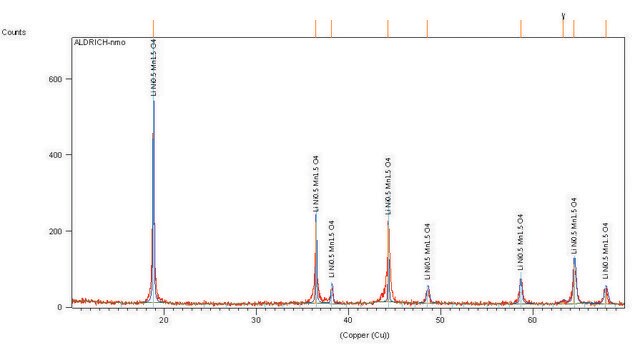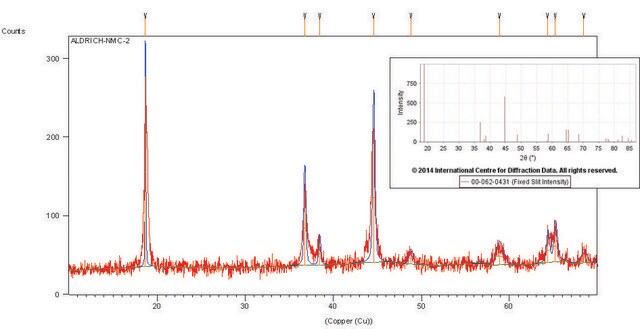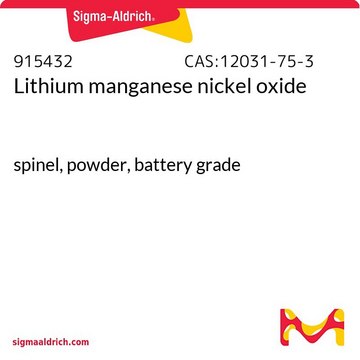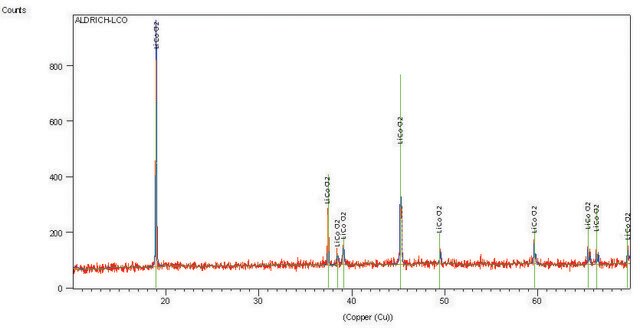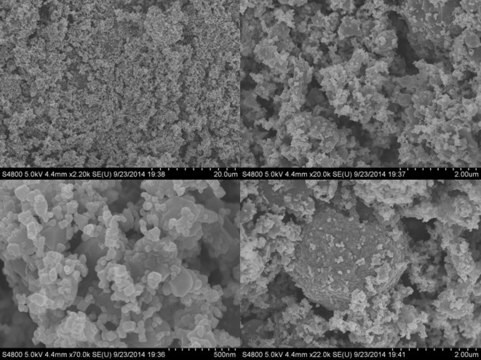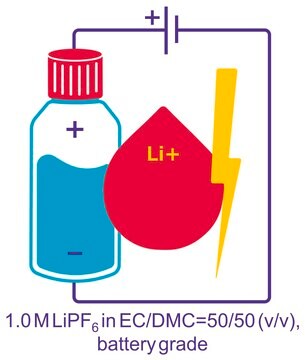Kluczowe dokumenty
765201
Lithium manganese oxide
spinel, electrode sheet, size 5 in. × 10 in.
Synonim(y):
LMO, Lithium manganese(III,IV) oxide
About This Item
Polecane produkty
klasa czystości
battery grade
opis
Nominal Voltage: 4.7 V, Li/Li+
Próba
≥98%
Formularz
sheet
skład
loading, ≥80%
charakterystyka ekologicznej alternatywy
Design for Energy Efficiency
Learn more about the Principles of Green Chemistry.
sustainability
Greener Alternative Product
zakres etykietowania
≥80% loading
rozmiar
5 in. × 10 in.
grubość
~25 μm
wielkość cząstki
10-13 μm (typical)
pojemność
110 mAh/g
120 mAh/g(nominal at 0.1C)
mp
>1000 °C
Zastosowanie
battery manufacturing
kategoria ekologicznej alternatywy
, Enabling
ciąg SMILES
[Li+].[O-][Mn]=O.O=[Mn]=O
InChI
1S/Li.2Mn.4O/q+1;;;;;;-1
Klucz InChI
VLXXBCXTUVRROQ-UHFFFAOYSA-N
Opis ogólny
Zastosowanie
Inne uwagi
Warunki pracy:
- Zalecane maksymalne napięcie ładowania: 5,0 V vs Li/Li+
- Zalecany maksymalny prąd ładowania: 3 C
- Zalecane napięcie odcięcia dla rozładowania: 3,5 V vs Li/Li+
- Zalecany maksymalny prąd rozładowania: 5 C
Kod klasy składowania
11 - Combustible Solids
Klasa zagrożenia wodnego (WGK)
WGK 3
Temperatura zapłonu (°F)
Not applicable
Temperatura zapłonu (°C)
Not applicable
Wybierz jedną z najnowszych wersji:
Certyfikaty analizy (CoA)
Nie widzisz odpowiedniej wersji?
Jeśli potrzebujesz konkretnej wersji, możesz wyszukać konkretny certyfikat według numeru partii lub serii.
Masz już ten produkt?
Dokumenty związane z niedawno zakupionymi produktami zostały zamieszczone w Bibliotece dokumentów.
Klienci oglądali również te produkty
Produkty
Professor Qiao’s laboratory lays out recent advances in conversion type lithium metal fluoride batteries. This review explores key concepts in developing electrochemically stable microstructures for wide Li-ion insertion channels.
Electrode Materials for Lithium Ion Batteries
Li-ion batteries are currently the focus of numerous research efforts with applications designed to reduce carbon-based emissions and improve energy storage capabilities.
Lithium-ion batteries (LIBs) have been widely adopted as the most promising portable energy source in electronic devices because of their high working voltage, high energy density, and good cyclic performance.
Nasz zespół naukowców ma doświadczenie we wszystkich obszarach badań, w tym w naukach przyrodniczych, materiałoznawstwie, syntezie chemicznej, chromatografii, analityce i wielu innych dziedzinach.
Skontaktuj się z zespołem ds. pomocy technicznej
